Enabling Manufacturing &
Supply Chain Resilience
Locations

Head Office
- JAF Solutions, Level 25, 108 St Georges Terrace, Perth, Western Australia
6000 - [email protected]
- +61 8 6557 8947
Welcome to JAF Solutions
Manufacturers all around the world are taking stock of recent challenges and opportunities to future-proof their operations. A place to start is increasing visibility across the shopfloor and to the boardroom for improved decision making and resilience.
Boosting competitiveness with shopfloor production optimisation like material traceability, increasing production, reducing waste, downtime and energy costs. Improvements to Overall Equipment Effectiveness (OEE) scores across availability, performance & quality can be realised by using the real-time calculations on the shopfloor within the production runs. Reality is “If you can’t measure it, you can’t improve it.”, a 10% increase in OEE will positively impacting margins.
The Australian Food & Grocery Councils report Sustaining Australia: Food and Grocery Manufacturing 2030 Report – A Vision to Secure Sector’s Future based on analysis by leading economist Warren Hogan of EQ Economics identify the Australian food and grocery manufacturing risks losing global competitiveness unless steps are taken to boost investment in new advanced manufacturing technology to improve efficiency and innovation. This is true for other Australian Manufacturing Sectors.
Questions for all manufacturers to ask that impact profitability and can be solved by advanced manufacturing technology include -
The business benefits across organisational roles can be locked in -
Production Managers can manage OEE, production, quality, throughput and costs by reducing waste, over-spec products, energy consumption and manual paperwork. How? By increasing overall OEE and Leveraging Digital Manufacturing Technology along with Industry 4.0 to provide real-time updates and visibility to the shopfloor.
Supply Chain Managers can manage inventory, throughput, and costs by reducing manual paperwork while increasing data accuracy with real-time goods receipts and goods issues by Leveraging Digital Manufacturing Technology along with Industry 4.0
Continuous Improvement Managers can address improvement opportunities within production, inventory, throughput, and costs by reducing manual paperwork, while increasing data accuracy and quality by Leveraging Digital Manufacturing Technology along with Industry 4.0
CFO can ensure profitability, governance, and risk management to improve supply chain resilience, sustainability reporting and reduce costs by Leveraging Digital Manufacturing Technology along with Industry 4.0
Future-proofing manufacturing operations by increasing visibility across the shopfloor and to the Boardroom improves decision making and will build resiliency.

